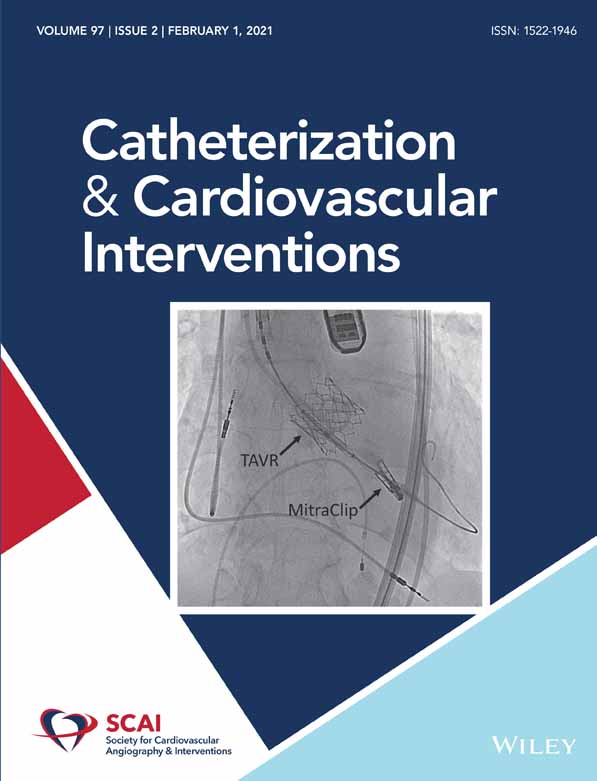The prognostic value of initial serum lactate for survival in postcardiac arrest patients undergoing cardiac catheterization
Abstract
Objectives
We sought to investigate the prognostic value of serum lactate on survival in patients postcardiac arrest.
Background
Patients who experience cardiac arrest, in- or out-of-hospital, may have a poor outcome. Initial electrocardiograms may suggest ischemia as an underlying cause and urgent referral for catheterization occurs. It remains unclear which of these patients may suffer a poor outcome.
Methods
We retrospectively reviewed all patients at our institution taken for urgent catheterization after cardiac arrest between January 2014 and September 2018. Three hundred and eighty four patients were referred urgently to the cath lab during this period, 50 with prior arrest.
Results
Sixty six percent underwent coronary intervention. The mean age of the entire cohort was 57 years. Thirty four percent were female, 40% had a history of coronary artery disease, and 94% were intubated at the time of cardiac catheterization. Overall survival to discharge was 40%. Survival in patients who underwent coronary intervention compared with those who did not was similar (45.5 vs. 29.4%, p = .27). Mean lactate level in survivors versus nonsurvivors was 4.7 ± 3.8 and 9.8 ± 4.7 mmol/L, respectively (p < .05). When divided into tertiles by serum lactate (< 4.5, 4.5–9, 9 mmol/L), survival to discharge was 75, 29.4, and 17.6%, respectively (p < .05). Initial serum lactate and age were independent predictors of in-hospital mortality.
Conclusions
In patients undergoing cardiac catheterization following cardiac arrest, routine measurement of serum lactate is a useful and available laboratory test that may help identify patients at risk for a poor outcome.




